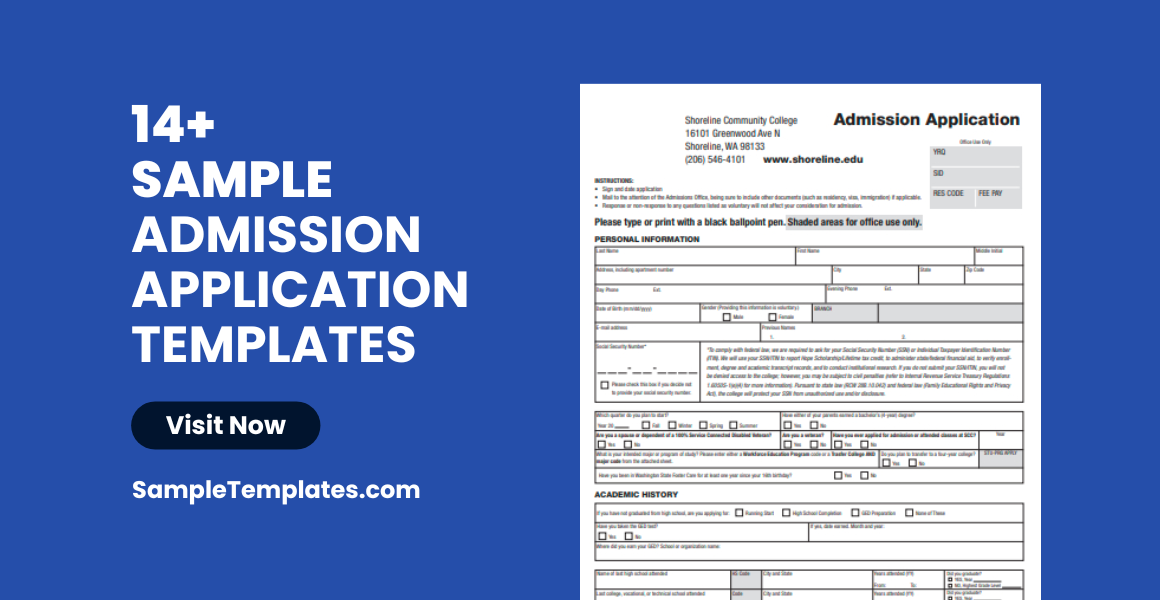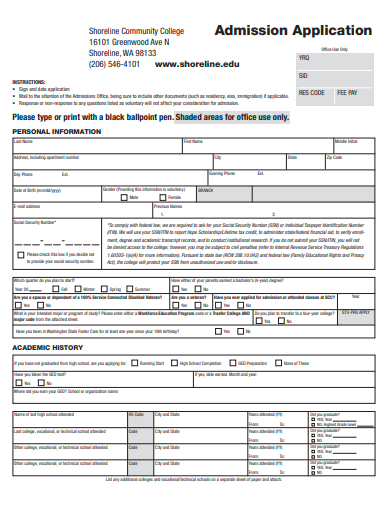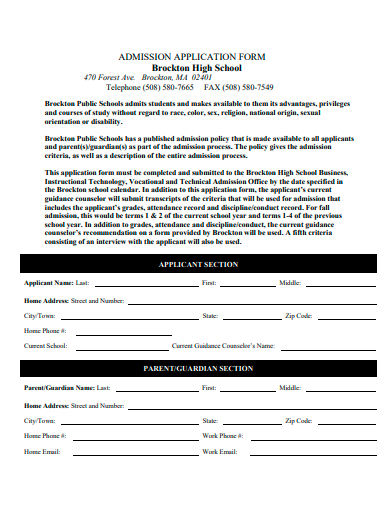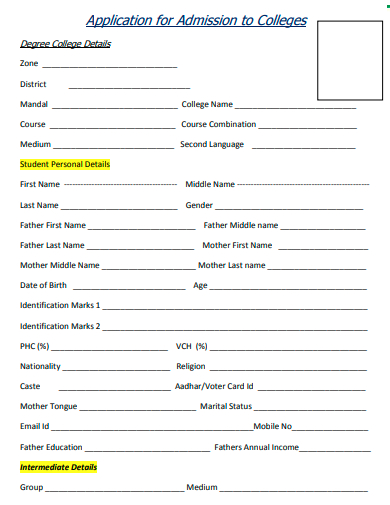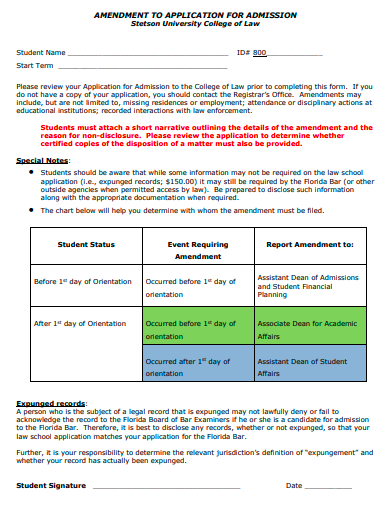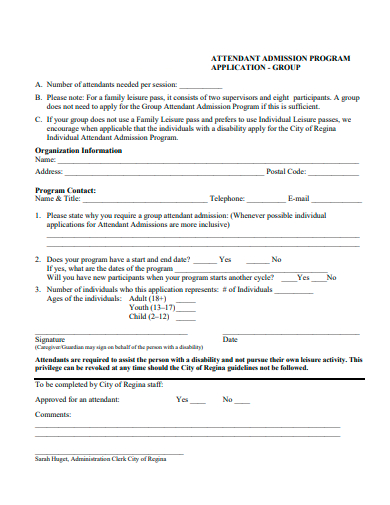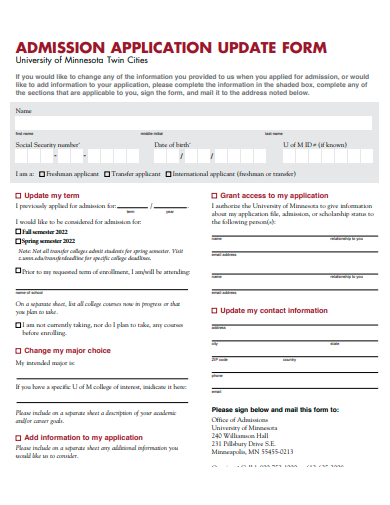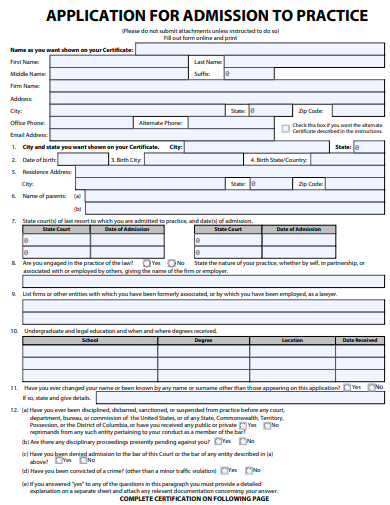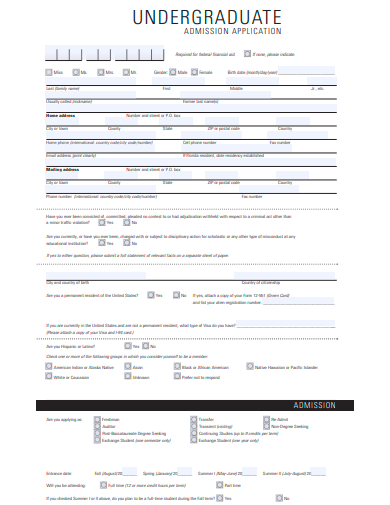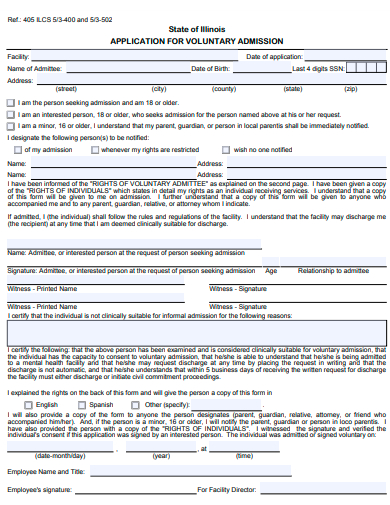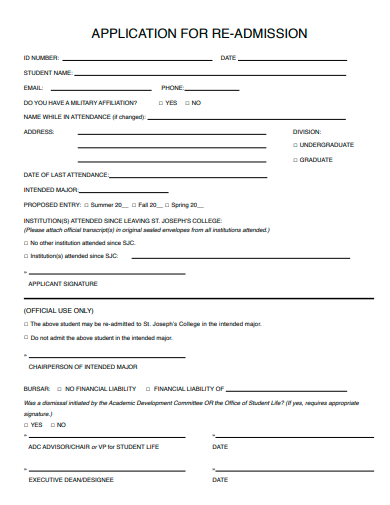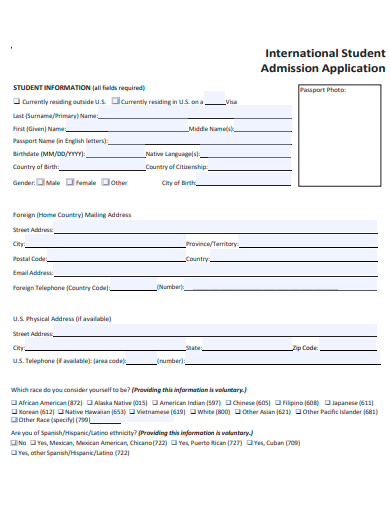The ‘Admission Application’ is the gateway to new academic and professional horizons. This pivotal document encapsulates an applicant’s credentials, aspirations, and potential, serving as a bridge to coveted institutions and opportunities. Across schools, colleges, or specialized sample programs, these applications hold the key to transformative experiences. Dive into our detailed guide, understanding the intricacies, best practices, and the unparalleled role a well-curated Admission Application plays in charting one’s academic and professional journey.
14+ Admission Application Samples
1. Sample Admission Application Letter for College Template
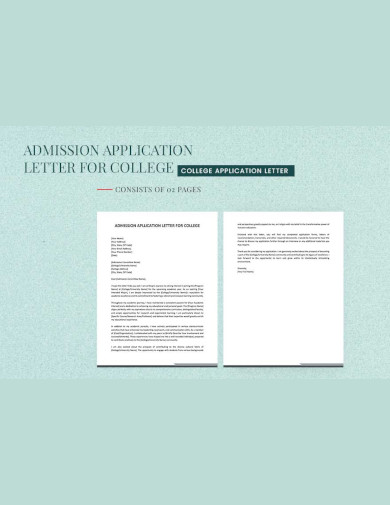
2. Sample School Admission Application Template
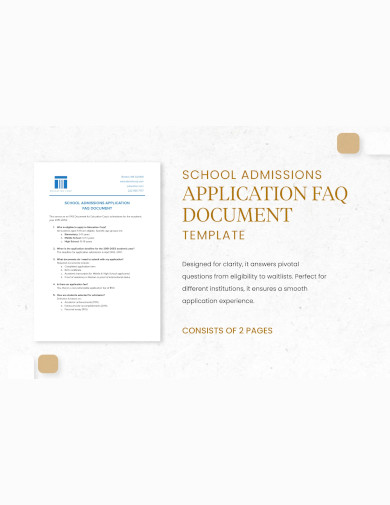
3. Sample School Admission Application Form Template
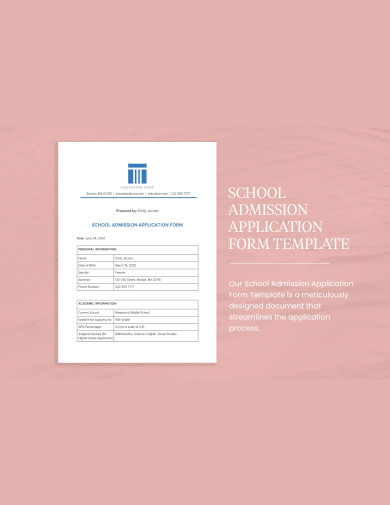
4. Sample Admission Application Template
5. Sample High School Admission Application Form Template
What is an Admission Application?
Introduction to Admission Applications
At the core of many educational and professional institutions lies a pivotal process: admissions. An admission application is a digital document that prospective students or candidates fill out to express their interest in and eligibility for a particular program or position. These design documents help institutions evaluate who gets an opportunity to join.
Components of an Admission Application
- Personal Details: This section typically captures information such as the applicant’s name, date of birth, nationality, and contact details.
- Academic Background: Here, applicants provide details about their educational qualifications, such as the institutions they attended, degrees obtained, grades, and any academic achievements.
- Work Experience (if applicable): Particularly for postgraduate programs or professional courses, applicants may need to detail their professional history, roles and responsibilities, and achievements.
- Statement of Purpose or Personal Essay: A critical component, this written piece offers applicants a chance to express their motivations, aspirations, and reasons for applying. It provides context beyond the numbers and facts elsewhere in the application.
- Letters of Recommendation: These are endorsements, typically from individuals who’ve interacted with the applicant in academic or professional settings and can vouch for their capabilities and character.
- Portfolio or Additional Documents: Depending on the nature of the program (e.g., arts, architecture, or design), a sample portfolio showcasing the applicant’s work might be required.
The Digital Shift in Admission Applications
The move to digital formats for admission applications has revolutionized the application process. Digital applications allow for streamlined processing, easier storage and retrieval, and often quicker turnaround times in decision-making.
Benefits of Digital Admission Applications
- Eco-Friendly: Digital applications reduce the need for sample paper, leading to a lower environmental footprint.
- Accessibility: With the digital approach, applicants can access and submit applications from anywhere, without the constraints of geographical boundaries.
- Efficiency: Automated systems can quickly sort, filter, and categorize applications, speeding up the sample review process.
- Enhanced Security: Digital storage means that applications are often more secure, with backups and encryption safeguarding sensitive information.
Challenges and Considerations
While the digital format offers numerous advantages, institutions need to be aware of potential challenges, such as ensuring digital equity (making sure all applicants have access to necessary technology), cybersecurity concerns, and ensuring the platform’s user-friendliness.
How do I obtain a Admission Application?
Securing an admission application is the first crucial step for candidates seeking entry into educational institutions or specific programs. In today’s digital age, obtaining an admission application has become easier and more streamlined than ever before. However, the approach might differ based on the institution, country, or course in question.
Traditional vs. Digital Admission Applications
Before delving into the specifics, it’s vital to understand the difference between traditional paper-based applications and modern digital applications.
Traditional Applications:
- Often available at the institution’s administrative office.
- Might require a visit to the campus or a request via post.
- More common in institutions or regions with limited online infrastructure.
Digital Applications:
- Accessible online, typically on the institution’s official website.
- Can be filled out and submitted electronically.
- Increasingly becoming the standard globally.
Steps to Obtain an Admission Application
- Research the Institution’s Website: Most academic institutions have dedicated sections on their websites for admissions. This section usually provides detailed instructions on obtaining and submitting the application.
- Contact the Admissions Office: If information is unclear or not available online, it’s best to contact the institution’s admissions office directly. They can guide you on how to get the application form, whether online or offline.
- Visit the Campus: Some institutions, especially those without strong online presences, might require candidates to visit in person to obtain an application. It can also be an opportunity to get a feel for the campus and its environment.
- Application Portals: Many universities, especially in countries like the U.S., use centralized application systems like the Common Application, UCAS (for the UK), or others. These portals allow candidates to apply to multiple institutions using a single platform.
- Attend Education Fairs: These sample events often have representatives from various institutions. Candidates can directly obtain application forms and even get immediate answers to their queries.
- Third-party Websites: Some educational consultancies or platforms provide application services, guiding students through the process and even offering application forms.
Steps to Fill Out the Admission Application
1. Personal Information: This will typically include:
- Full name
- Date of birth
- Contact information (address, phone number, email)
- Nationality or residency status.
2. Educational Background: Detail your academic history.
- List schools attended, durations, and any degrees or diplomas earned.
- Include your grade point average (GPA) or equivalent scores.
- Mention any academic honors or awards.
3. Test Scores (if applicable): Some institutions might require standardized test scores like the SAT, ACT, GRE, or GMAT. Ensure you have these scores ready and know the process to send official scores if required.
4. Work Experience: Especially relevant for postgraduate or vocational programs.
- List your employment history, roles, durations, and sample brief descriptions of responsibilities.
- Highlight any relevant experience or achievements.
5. Extracurricular Activities: Showcase your involvement outside of academics.
- Clubs, sports, volunteer work, or other extracurricular engagements.
6. Statement of Purpose or Personal Essay: This is your chance to speak directly to the admissions committee.
- Discuss your motivations for applying, future aspirations, and why you’re a good fit for the program.
- Keep it authentic and adhere to any given word or page limits.
7. Recommendation Letters: If the application requires references:
- Choose individuals (teachers, employers, mentors) who know you well and can provide a comprehensive and positive endorsement.
- Provide them with any necessary forms or links, and give them ample time to complete their recommendations.
8. Attach Supplementary Documents: Depending on the institution or program, you might need to attach or submit additional documents like a portfolio, research papers, or certificates.
9. Review: Before final submission, meticulously review every section of your application. Look for typographical errors, incomplete sections, or any inconsistencies.
10. Payment: Some institutions have an application fee. Ensure you have the means to pay (credit/debit card, bank transfer, etc.) and follow the payment instructions.
6. Sample College Admission Application Template
7. Sample Admission Amendment Application Template
8. Sample Attendant Admission Program Application Template
9. Sample Admission Application Update Form Template
10. Sample Admission to Practice Application Template
11. Sample Undergraduate Admission Application Template
12. Sample Voluntary Admission Application Template
13. Sample Re-Admission Application Template
14. Sample International Student Admission Application
15. Sample Postgraduate Admission Application Template
How do you Create a Admission Application?
Creating an admission application for an institution, whether it’s for a school, college, or university, involves collecting pertinent information to assess and select candidates effectively. You can also see more templates like Program Application Samples. Here’s a detailed guide on crafting an admission application in five structured steps:
Step 1: Personal & Demographic Information
Begin with essential details. The application should request:
- Full name
- Date of birth
- Gender
- Nationality/citizenship
- Permanent and current address
- Contact details: phone number, email address This foundational information is vital for the institution’s records and communication purposes. For inclusivity, consider providing an “Other” or “Prefer not to say” option for gender.
Step 2: Academic History & Qualifications
Chronicle the applicant’s educational journey:
- Names of previously attended institutions
- Duration of study at each institution
- Transcripts, grades, or marks obtained
- Certifications, diplomas, or degrees awarded
- Standardized test scores (if applicable) This section helps institutions gauge the applicant’s academic preparedness for the program they’re applying for.
Step 3: Extracurriculars, Skills & Achievements
Holistic assessment considers activities beyond academics:
- List of extracurricular activities (sports, arts, clubs)
- Volunteer work or community service
- Internships or work experiences
- Skills, languages spoken, and technical proficiencies
- Awards, honors, or special recognitions This provides insight into the candidate’s diverse experiences, talents, and contributions to their community.
Step 4: Personal Statement, Essays & Recommendations
Allow applicants to express their individuality and aspirations:
- Personal statement or essay on specified topics
- Why they’re seeking admission into the institution/program
- Future sample goals and aspirations
- Letters of recommendation from teachers, mentors, or professionals who can attest to the applicant’s capabilities and character This qualitative data gives depth to an applicant’s profile, showcasing their motivations, values, and potential.
Step 5: Submission Protocols & Fee Details
Streamline the submission process:
- Clearly mention any application fees, providing secure payment methods
- State submission deadlines
- Offer detailed guidelines for online or offline submission
- Instructions for attaching documents, photographs, or additional materials
- Confirmation process post-submission (e.g., an acknowledgment email) By providing a straightforward submission sample roadmap, you enhance user experience and ensure applicants know what to expect next.
In Conclusion, the admission application, especially in its digital professional form, stands as a testament to the evolution of the enrollment process in modern times. It encapsulates the applicant’s journey, ambitions, and potential, providing institutions with a comprehensive view to make informed decisions. As technology continues to advance, it’s likely that the world of admission applications will see further innovations, making the process even more seamless and efficient for all involved.
Related Posts
FREE 20+ University Application Samples in MS Word | Google Docs | PDF
FREE 29+ Student Application Form Samples in PDF | MS Word
FREE 21+ Teacher Application Samples in MS Word | Apple Pages | Outlook | PDF
FREE 25+ Transfer Application Samples in MS Word | Apple Pages | PDF
FREE 23+ Participation Application Samples in MS Word | PDF
FREE 14+ Patient Application Samples in MS Word | PDF
FREE 21+ Eligibility Application Samples in PDF
FREE 20+ Travel Application Samples in PDF | MS Word
FREE 25+ Sponsor Application Sampales in MS Word | Google Docs | Apple Pages | PDF
FREE 23+ Candidate Application Samples in PDF
FREE 33+ Committee Application Samples in PDF | MS Word
FREE 37+ Supplemental Application Samples in PDF | MS Word
FREE 37+ Product Application Samples in PDF | MS Word
FREE 33+ Visiting Application Samples in PDF | MS Word
FREE 34+ Refund Application Samples in PDF | MS Word
